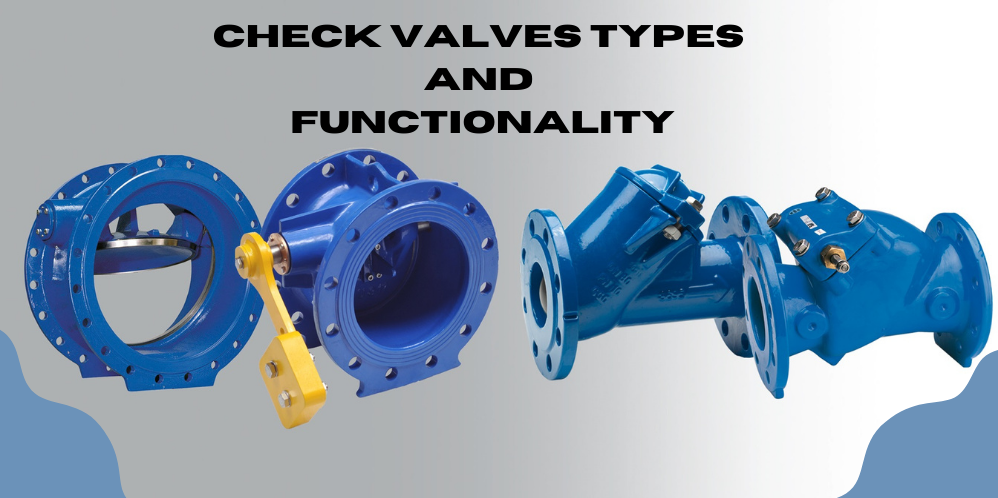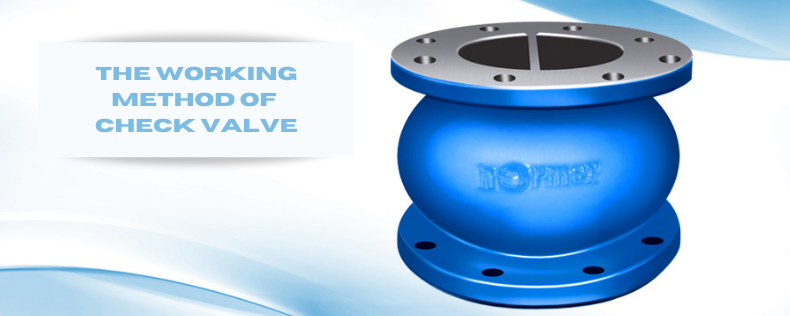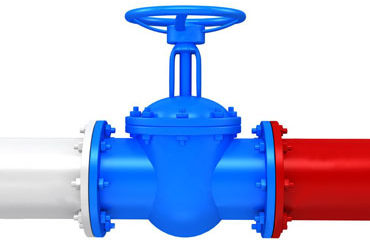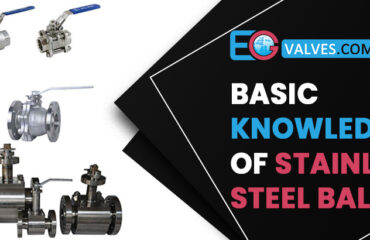
Check valves play a crucial role in the manufacturing sector. These are designed to function under tremendous pressure and high-intensity pipelines. They act as tiny knobs regulating the flow of fluid and gas. They work to regulate or stop the supply completely when required.
Industrial valves are designed for heavy-duty and they are potentially used to streamline industrial operations. Since industries play a crucial role in the economical growth, industrialization is ramping up so as the application of the industrial valves.
According to experts, the global industrial valves market is ready to surpass 78 billion dollars in the current year. In the coming years, the demand for the Industrial Valves will be multiplied due to the rapid growth of industries. This is the reason; valve manufacturers are preparing themselves to tap this huge market by producing various valves for different types of applications.
Various types of industrial valves can be found and these check valves are mainly used to control the flow of liquid. Here are the details of these valves:
What is a check valves?
Check valve is also called Non Return Valve. In most of the industries, controlling high pressure fluid needs special devices and check valve is extensively used for this purpose. These are brilliantly designed to let the flow of fluids in one direction. They have two ports and inlets along with the output. Since, these are designed to let the fluid flow in one direction, therefore, they are also known as the “non return valves”. The main objective of the check valve is to stop the return of the fluid by obstructing the path.
Check valve mainly depends on the pressure to function. They are mainly installed where the pressure is generally higher compared to any other part of the components. When the outlet side experiences high pressure, the valve will be closed automatically. There is no manual or machinery operation needed in this case. They mainly work automatically by providing a complete stop to the return fluid.
Why do check valves crucial?
Since the main purpose of installing check valves is to stop liquid backflow, these check valve play a vital role in many industrial systems and operations. Check valve help to protect the entire system from serious damage by applying rupture only to the sudden reversal of fluid. One thing is to keep in mind that the sudden reverse flow of fluid can cause severe damage to many systems and this is why it is crucial to overcome this issue by installing check valves. When the flow moves in one direction the valve stays open and when reversed it closes automatically due to the excellent design.
Various fluid handling systems like pumps and compressors also use these check valve to secure their internal machines from the reverse flow of the fluid. Due to these valves, their function improves and they function well for a longer time.
The primary purpose of the check valve china is to stop the backflow of liquid to the supply line. Check valves rely on fluid pressure to open and then fluid flows through the valve itself. The upstream pressure is the driving force of the check valve. This pressure used to open the valve is known as the ” cracking pressure” or opening pressure and differs depending on the design and requirements of the check valve.
To close the check valve, the upstream pressure has to fall below the cracking pressure. Since, this process is completely automatic, no additional force is needed to operate them according to the need. So, the reverse force of the liquid forces the gate or disc to be closed and completely seals it. In some check valves, spring and gravity are used to smoothen and fasten this process.
Different types of check valves
There are several types of check valves available. Some of them are given below.
· Lift check valve
· Swing check valve
· Ball check valve
· Diaphragm check valve
· Tilting-disc check valve
· Stop check valve
· Spring-loaded check valve
· Duckbill check valve
Lift check valves
Many piping systems do use the lift check valves and the globe valves are commonly used as the flow control valve. These valves have the same seating arrangements like globe valves. These are best to be used in various systems that mainly work on the upward flow. These are mainly used in various systems that are working on steam, gas, air, water and vapor supply lines. These lines mainly work on high velocity force and these systems work perfectly on them. In this way, Lift check valve have an advantage over most other types of check valves and they only require a short lift to ensure the valve is fully open.
Swing check valve
The swing control valve is primarily mounted on a disc that swings primarily on a hinge or shaft. The disc inside the valve creates a space due to pressure to allow fluid to flow through the supply line and when the flow stops, it automatically returns to its previous position. By this mechanism, it can systematically stop the reverse flow and can thoroughly create the seal to stop the reverse flow of the fluid. Most of the time, the weight of the disc influences the speed of the function of the swing check valve.
To speed up the performance of the check valve, a heavy lever and a lever spring are installed. Swing check valve with levers along with the weight are the perfect in such installations where there is the risk of heavy pressure at the common velocities. Many designers also use external springs to perform the valve normally when the upward pressure is high but the back pressure is insufficient.
Swing valves are not free from maintenance. This is because they need supervision in between to clean the disc and check the working capacity of the spring mounted outside. This is the reason, swing valves are mainly used where the operators are present.
Ball check valve
Ball check valve work with an extensive mechanism. In such valves, balls work as the closure members and allow the fluid to travel without any close guidance. Inside the ball check valve, the ball plays the crucial role to make this valve functional. The seat of the valve is rightly designed to fit the ball in that way to create the seal. Ball check valve chamber is mainly designed in a conical shape and it helps the ball to guide to the seal to stop the reverse flow.
If the capacity of the pump is insufficient then a lighter ball will be best to use. On the other hand, if the flow of the liquid is higher then heavier ball check valves are installed to work efficiently. Most of the time, the ball check valve are used in various pumping stations where the flow of the liquid is higher compared to any others. Since ball check valve are virtually free from maintenance, they are ideal choices for various industrial operators.
Tilting-Disc Check Valve
Tilting check valves are mainly designed in such a mechanism where the disc has a pivot point in the center of the disc. When liquid flows forward, the valve opens easily, and when there is a counter flow, the valve closes immediately to stop the flow. Needless to mention, the tilting-disc valves are potentially fast closing. In certain tilting-disc checks, valves are spring-loaded and they ensure quick response to slowing the forward flow.
Many agricultural applications use the check valve with tilt discs and are also ideal for use in various heavy machinery. Tilt disc check valves are useful where counter flow is common. The disc mainly works like an airfoil and once it gets opened fully, the process easily holds it completely open. The function of the tilt disc check valve is different from that of the check valve. The fluid velocity must be high enough to open the valve.
The tiling disc is lightweight and smaller than the swing check valve. Also, the center of gravity of the disc is closer to the pivot point. In this way, this valve is operational with a minimum current effort. At the higher flow rate, the tilt disc has a high pressure drop compared to the check valve.
Diaphragm Check Valve
If anyone wants to seal the supply line instantly and stop the reverse flow, he should use the diaphragm check valve for this cause. This type of check valves generally open normally. A flexible elastomer disc is the main part of this check valve and works excellently during fluid flow. The valve body primarily keeps the disc centered on the seat area or valve seal.
The sealing surface always remains on the inlet side of the check valve body. This disc works excellently because the valve body is smooth and fine. It is usually concave and curved back into the inlet. The opening point located in the center and the reverse flow causes the flexible rubber disc to properly lie down across the curved sealing surface. It usually closes the entrance to the inlet port. A valve closed in this way stops the counter flow through the inlet.
Stop check valve
In many industries, the valves play a crucial role to meet the supply line security. They generally work to stop the reversal flow in the pipeline. Stop check valve mainly work when the flow of the fluid goes through the material pipeline. The pressure of the liquid material opens the valve and the reversal of the flow will close the valve right away. Since, the closure is mainly accomplished by its self weight along with the check mechanism combined with back pressure.
Stop check valve is the fusion of the check valve and the globe valve. This valve contains a stem and once closed prevents the disc from detaching from the seat and ensures a perfect seal. When the stem is actuated in the open position, the valve functions as a check valve. The stem is not directly connected to the disc and its function is to seal the valve or sometimes to limit the movement of the valve disc to the outlet.
Spring-loaded check valves
Spring loaded check valve offer a very basic divide valve type. Spring loaded means the valve completely works on the mechanism of the spring and helps the closure to work according to the pressure being generated by the spring with the help of the pressure of the fluid. The main benefit of using a spring instead of any other mechanism is, it restricts the valve to depend on any other force like gravity. So, no matter how these valves are installed, they work thoroughly in order to deliver the best possible result in the industrial operations.
Duckbill check valves
Duckbill check valve are uniquely designed. One elastomeric component acts perfectly to halt the backward flow. Duckbill check valves have the elastomeric lips and it helps to stop the reverse flow and allow the forward flow into the valve. These are self contained and the critical sealing function is the main part of the one piece elastomeric component to make the seal. This is the reason, these are easy to be installed in various supply lines and assembled in a number of devices without any additional hassle.
conclusion
Industrial operation is full of complexity and it requires the right kind of valves to streamline the operation. Check valve are perfect to be installed in various industries. They mainly work under the high-pressure fluid flow and regulate them when there is a need. There is no additional human and machine intervention needed to operate them.
EG Valves Manufacturing Co. Ltd designs and manufactures a wide range of valves and other products. All our products are manufactured according to different surface finishes, materials, and industry standards. Connect with us at 86 577 5799 2227 to know more about our products and services!




